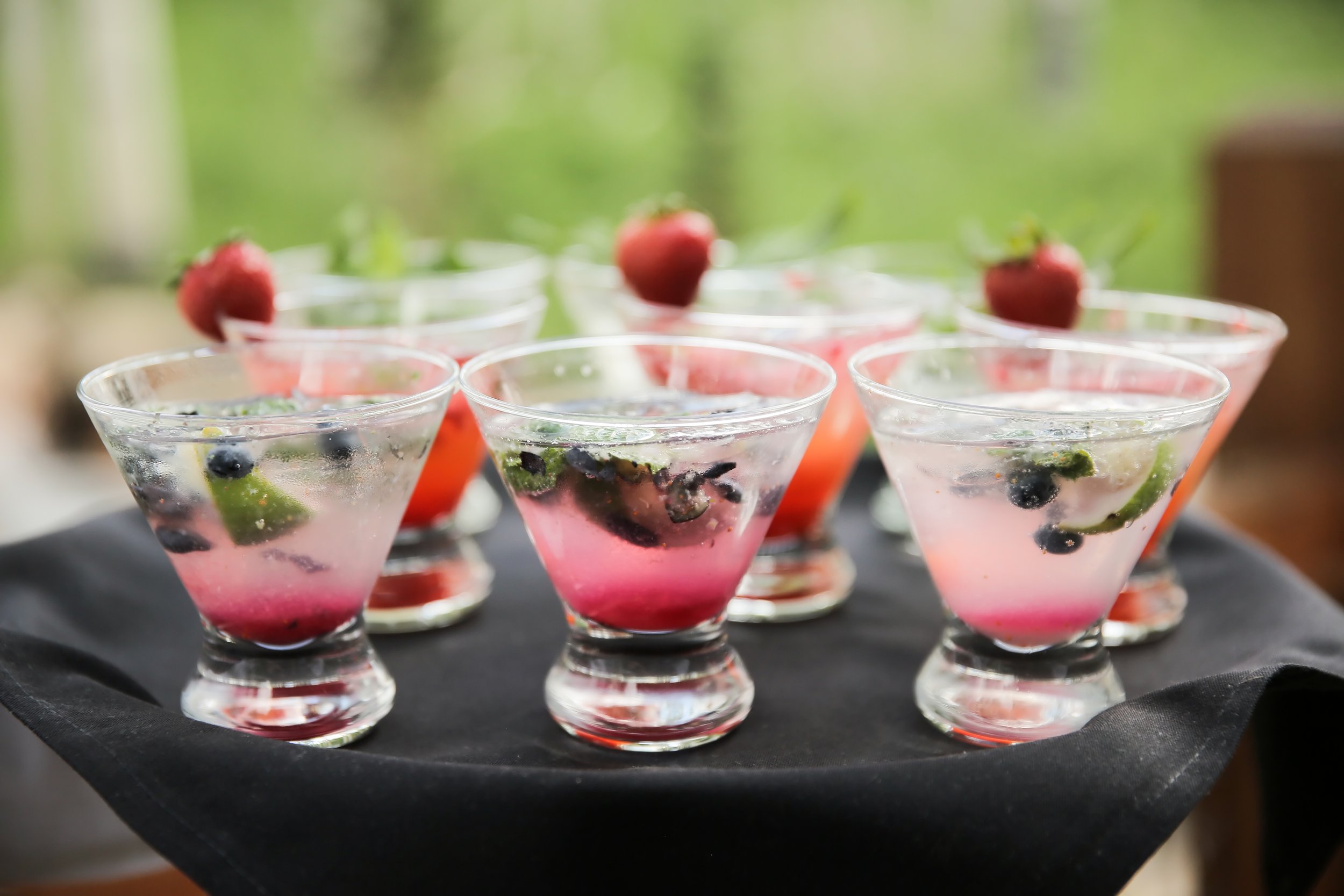With Mother’s Day (May 12) and World Cocktail Day (May 13) both approaching, it seems like a great time to focus on something delicious for the wonderful women in our lives.
Specifically, mocktails.
We’ve written before about the growing trend toward alcohol-free beverages. We’ve even shared mocktail recipes such as our virgin mojitos (pictured above) or booze-less versions of our witches’ brew, pea blossom gin and tonic, and garden party cocktail.
But today, we want to share the perfect Mother’s Day Mocktail, something sweet, refreshing, floral, and pleasantly pink.
But first, in deference to World Cocktail Day, let’s try to figure out the age-old question of how cocktails got their name.
How did cocktails get their name?
By the early 1800s, the term “cocktail” was starting to enter American English. A letter to the editor of a New York paper in 1806 asked for the meaning of the term. In reply, the editor explained that a “Cock-tail…is a stimulating liquor, composed of spirits of any kind, sugar, water, and bitters.” The editor went on to point out that a cocktail is also an excellent tool for any candidate for public office because “a person having swallowed a glass of it, is ready to swallow any thing else.”
But where did the word come from? That’s a bigger mystery than what ingredients the Carthusian monks put into a batch of chartreuse!
There are a lot of theories, but here are the most plausible.
The New Orleans Theory:
One version of the story claims that the term came from New Orleans where a Creole pharmacist named Peychaud (the creator of Peychaud’s bitters). He was famous for making a mixed brandy drink and serving it in a French egg cup called a coquetier. Over time, the name of the drink supposedly evolved into “cocktail.”
The French Theory:
A simpler explanation is that the term derived from the French word coquetel, which meant “mixed drink” in Bordeaux.
The Dregs Theory:
Another plausible explanation is that bartenders used to take the last dregs from barrels of spirits, called the “tailings,” and pour them all into one barrel. The contents of that barrel were then sold at a discount to anyone who ordered a pour from that spigot, which was called a “cock.” Thus the “cocktailings” came to mean a drink of mixed spirits.
The Horse Theory:
An older use of the word “cocktail” had to do with horses. If a horse had a docked tail, which made it stand up like a rooster’s, that was a sign that the horse was not a thoroughbred. A cocktail thus referred to an ill-bred horse or, by extension, to an ill-bred person who put on airs of sophistication but was not a true gentleman. The word “cocktail” thus came to have a connotation of adulterated or lower quality as well as the sense of “mixed,” (as in “a fruit cocktail” or “a cocktail of cancer drugs”). It’s easy to see how certain mixed alcoholic drinks could come to be labeled as cocktails, since they combine the elements of being mixed, impure, unsophisticated, and of lower quality. Indeed, during American Prohibition, cocktails became popular precisely because they disguised the poor quality of the illegal alcohol that was available.
No one knows which origin story is right. There may be some truth in any of these theories about the origin of cocktails, but it’s certain that the stigma about cocktails being unsophisticated or inferior has disappeared. Today, cocktails (and their non-alcoholic mocktail versions) are welcome anywhere.
Which brings us back to our Mother’s Day Mocktail, the Elderflower Grapefruit Collins.
Elderflower Grapefruit Collins
Our recipe is modified from a Peak Beverage recipe you can find here.
The original version is a variation on a classic Tom Collins, which is a traditional cocktail that combines gin, lemon juice, simple syrup, and club soda. The recipe from Peak Beverage substitutes lime juice for the lemon, replaces the simple syrup with elderflower syrup, and drops the gin in favor of grapefruit juice. For the most part, these substitutions work to give a very floral, refreshing alcohol-free drink.
The problem, unfortunately, is that grapefruit juice can’t really replace the complexity and interesting taste levels of gin. The result is a drink that, while pleasant, lacks much depth. It’s not something you’d go on sipping and savoring like a true Tom Collins.
Our version makes a few changes to restore some of that depth and complexity.
Elderflower Grapefruit Collins
Ingredients
1.5 oz pink grapefruit juice
0.5 oz lime juice (preferable fresh-squeezed)
1.5 oz elderflower syrup
0.5 oz ginger beer
2 oz sparkling water
Garnish (A twist of orange or grapefruit will work, or you can jazz it up with colorful edible flowers. A sprig of rosemary or thyme or a spritz of rose water or orange blossom water will heighten the herbal and floral scents.)
Instructions
1. Add grapefruit juice, lime juice, and elderflower syrup to a shaker and shake well.
2. Strain into a Collins glass filled with ice.
3. Top with ginger beer and sparkling water.
4. Garnish with orange or grapefruit peel or use any of the alternative garnishes described above.
5. Serve with a straw so your guests can blend the drink after they’ve enjoyed seeing the pleasant color gradient.
Happy Mother’s Day and World Cocktail Day!





